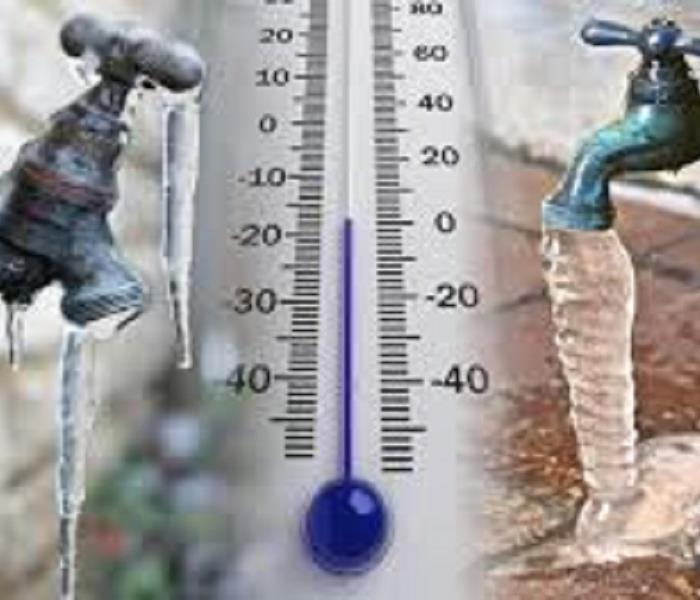Frozen Pipes...But not Broken Yet
2/10/2016 (Permalink)
Most people, when they think of frozen pipes in their homes, automatically think of broken pipes, spewing a huge mess that soaks carpet, subfloors, walls and more...requiring the attention of their water damage professional.
But many times, a frozen pipe doesn't necessarily become a broken pipe. You might have experienced this yourself: you go into a bathroom, during a really cold part of winter, turn on the faucet and nothing comes out. Or perhaps only a trickle dribbles into the sink.
This is a nuisance that must be dealt with quickly, before the pipe actually breaks and creates a larger problem.
Preventing this from ever happening is the best course of action. Here are some things you can do when temperatures dip well below freezing:
1. Take control of the temperature in your home. Some, especially when leaving for a few days, will set the temperature lower to save money. But keep your home at 60 degrees or higher. Installing a thermostat that you can control remotely from you smartphone means you can monitor your home 24/7 while traveling.
2. While home, when temperatures are extremely cold, open kitchen and bathroom cabinets to allow warmer air to flow among pipes and, for problem sinks that have had their pipes freeze in the past, or that you feel might freeze, allow a slow trickle of water to run.
3. Keep garage doors closed. If you have water supply pipes in the walls or ceiling of your garage immediately shut the garage door so the heat from the engine can help warm the garage.
But if a frozen pipe does happen, your only recourse is to thaw it. This might take some time. Warm up your house, and use safe heat such as a hair dryer, to warm the area where the pipe is frozen. Do not use a blowtorch, kerosene or other heat source fired by fuel and don't use open flames. If you can't determine where the frozen pipe is, a local plumbing company can help.
And of course, if the worst happens and a pipe does break, call us!






 24/7 Emergency Service
24/7 Emergency Service
